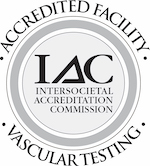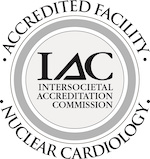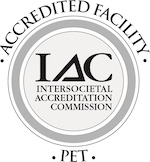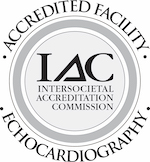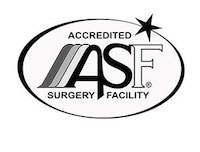Descriptions of Procedures
At The Huntington Heart Center, our physicians use the latest equipment and highly trained, licensed, experienced technicians to assist them in evaluating our patients with diagnostic testing.
The following is a listing of our most typical services and a brief description of what they are and the clinical indications for their use:
NON-INVASIVE DIAGNOSTIC TESTING
EKG-tracing electrical activity in the heart. Clinical indications include chest pain, shortness of breath, pre-op evaluation, post-op evaluation or heart attack.
HOLTER MONITOR– 24 or 48 hours of continuous EKG captured on a digital disk while the patient is in normal daily activity. Clinical indications include undocumented arrhythmias, unexplained symptoms such as weakness, dizziness, syncope and palpitations.
EVENT RECORDER – An event recorder is worn to capture heart rhythm while a patient is experiencing symptoms. It is worn continuously for up to 30 days or until abnormal heart rhythm is detected and recorded.
CARDIAC EXERCISE STRESS TEST– an EKG recording performed before, during and after exercise on a treadmill. Clinical indications include chest pain in a patient with a normal EKG, screening tool for patients with normal EKGs, evaluation of fitness in patients post heart attack or post-op.
STRESS-ECHO– A stress test in conjunction with an echocardiogram which is a practical method used to evaluate cardiac function and the diagnosis of coronary artery disease.
NUCLEAR STRESS TEST– EKG tracings recorded in conjunction with nuclear images of the heart at rest and again during stress. Clinical indications include chest pain in a patient with an abnormal EKG, noninvasive evaluations of myocardial perfusion. This test is often called a sestimibi or thallium stress test.
ECHOCARDIOGRAM– ultrasound imaging of the heart from the transthoracic location. Also called a cardiac sonogram or TTE. Clinical indications include all cardiac diagnoses (CHF, heart attack, murmur, chest pain, etc.).
CAROTID DOPPLER– imaging of the extracranial carotid arteries using ultrasound. Clinical indications include symptoms of a stroke, syncope, dizziness, carotid bruit, unequal bilateral brachial blood pressures, or pre-op evaluation
ARTERIAL IMAGING– imaging of the arterial system of an extremity using ultrasound. Clinical indications include evaluation of arterial blood flow, especially in patients with arteriosclerosis that prevents compression of the vessels with blood pressure cuffs. This test may also be called an arterial doppler study.
VENOUS IMAGING– imaging of the venous system of an extremity using ultrasound. This may be called a venous doppler study. Clinical indications include suspicion of deep venous thrombosis or evaluation of venous valve competency.
ABI-arterial blood pressures of segments of the extremities are taken along with arterial doppler evaluation at multiple sites along the extremity. This test also may be called a PVR study. Clinical indications include an evaluation of arterial blood flow.
INVASIVE DIAGNOSTIC TESTING
TRANSESOPHAGEAL ECHOCARDIOGRAM– ultrasound imaging of the heart with a transducer mounted on the end of a flexible probe inserted into the esophagus. Clinical indications include a need for a clearer picture.
CARDIAC CATHETERIZATION– a procedure that examines the heart and is used to help physicians diagnose a heart problem and choose the most effective treatment. During this procedure a physician can measure pressures inside the heart, evaluate the arteries delivering blood to the heart, and determine how well the heart is pumping. This is sometimes called a coronary angiogram.
BALLOON ANGIOPLASTY– also known as PTCA or coronary angioplasty is a procedure used to treat blockages in the coronary arteries. A catheter with a small balloon is inserted into the blocked artery and dilated to open the artery that supplies the heart muscle with blood.
ATHERECTOMY-is a procedure performed to treat blockages in the arteries. The narrowed arteries are widened by inserting a catheter carrying a device such as a rotating drill or a cutter into the artery.
CORONARY STENT– a cylindrical wire mesh device that is placed by a catheter into a previously blocked artery to help keep it open.
PERIPHERAL ANGIOGRAM– is a procedure that places a catheter into the femoral artery and allows for visualization of blockages in the lower extremities which can cause leg pain or claudication. When necessary a stent can be placed to keep the artery open.
ENDOVENOUS ABLATION– a treatment for varicose veins which has replaced the more complex stripping and ligation of prior years. This newer less invasive procedure eliminates saphenous vein reflux, commonly known as varicose veins, with less complication and discomfort to patients than was available before its advent. The procedure is performed with the use of a concentrated energy heating agent that closes dysfunctional veins. Once endovenous ablation is complete, the blood is rerouted through healthy vessels deeper within the tissue.
AMBULATORY PHLEBECTOMY– a method of removing varicose veins that involves making tiny punctures or incisions through which the varicose veins are removed. The patient is able to walk following the procedure and the procedure is commonly performed in the physician’s office.
SCLEROTHERAPY-is a procedure generally performed in the physician’s office. It is a highly effective non-surgical treatment for spider veins. In sclerotherapy, doctors inject an FDA-approved solution into the affected veins, which causes them to collapse, shrink, and eventually be absorbed by the body. Several brief sclerotherapy sessions may be required to fully get rid of spider veins.

